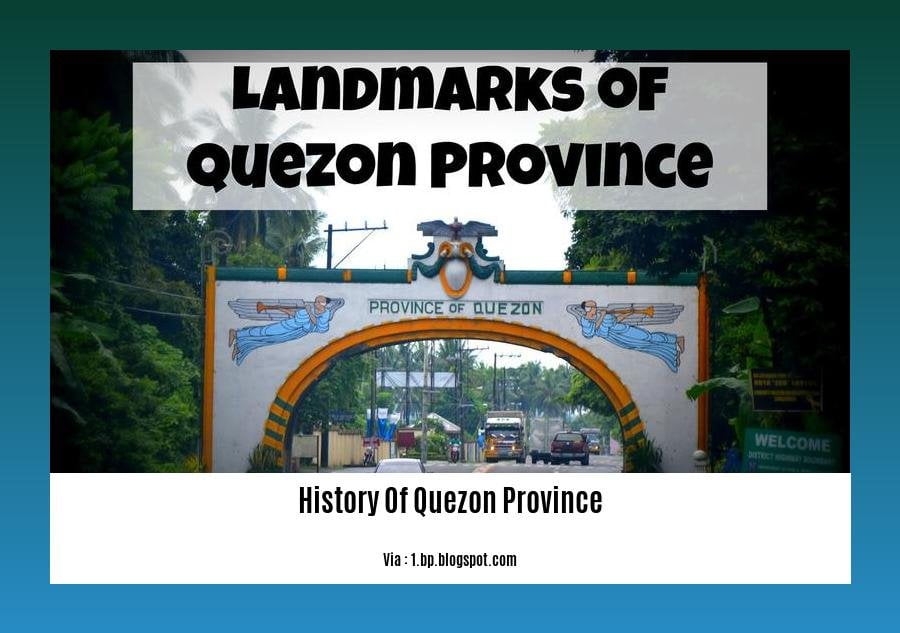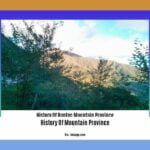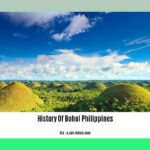Embark on a captivating journey through time as we unveil the rich tapestry of Quezon Province’s history in our article, “Unveiling the History of Quezon Province: A Journey Through Time.” Join us as we delve into the fascinating tales of this remarkable region, uncovering the events, people, and cultural influences that have shaped its unique identity.
Key Takeaways:
- Quezon Province is located in the Calabarzon region on Luzon, Philippines.
- It was established by Spanish Franciscan Friars in 1578 and previously known as Tayabas.
- Renamed Quezon in 1946 after Manuel Luis Quezon, the first president of the Commonwealth Period.
- Rich history includes events like Tayabas Uprising, American and Japanese Eras, and Independence.
- Rise of coconut industry played a significant role in the province’s development.
- Currently, Quezon is the largest province in Calabarzon and eighth-largest in the Philippines.
History of Quezon Province
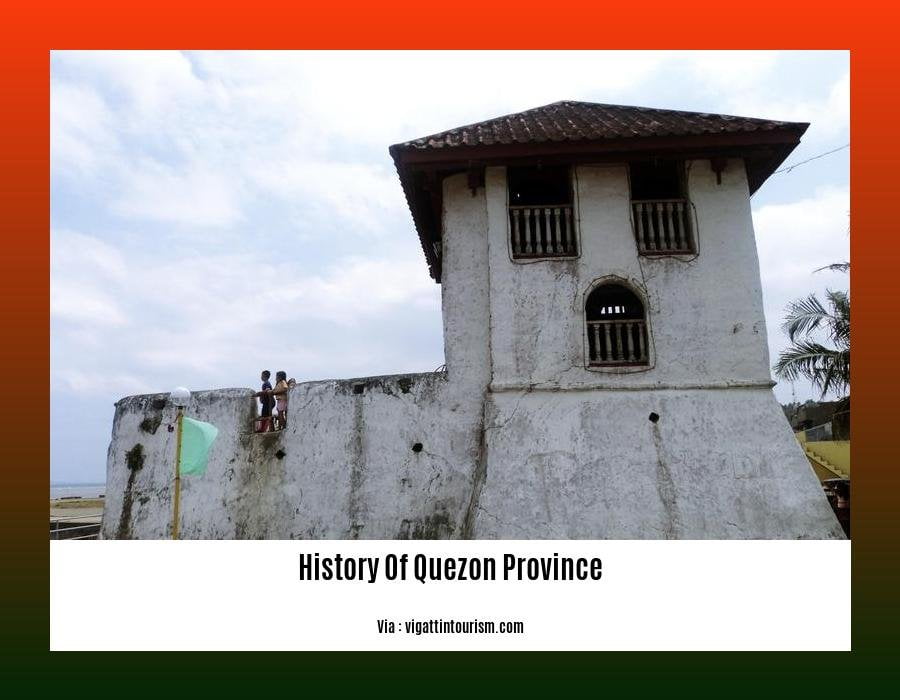
Quezon Province, nestled in the heart of the Calabarzon region, invites us on a thrilling journey through time. From its humble beginnings to its present-day vitality, Quezon’s story is an intricate tapestry of resilience, perseverance, and transformation.
The Early Chapters: Tayabas Province
The story of Quezon Province begins in the 16th century when Spanish Franciscan friars embarked on a mission to spread Catholicism and establish a presence in the region. Their efforts led to the establishment of Tayabas Province, which encompassed a vast territory stretching from the Pacific coast to the foothills of the Sierra Madre Mountains.
The Coconut Industry: A Catalyst for Growth
The 19th century witnessed the rise of the coconut industry, which played a pivotal role in shaping Quezon’s economy and society. Extensive coconut plantations sprang up across the province, transforming it into a major producer of copra and coconut oil. This lucrative industry attracted migrants, leading to population growth and economic prosperity.
The Fight for Independence
In 1896, the flames of the Philippine Revolution against Spanish rule ignited in Tayabas. Local heroes, fueled by patriotism and a desire for freedom, joined the fight for independence. Their unwavering spirit and courageous battles etched Tayabas’s name into the annals of Philippine history.
A New Era: Quezon Province is Born
The establishment of the Commonwealth of the Philippines in 1935 marked a significant turning point in the province’s history. In honor of Manuel Luis Quezon, the first president of the Commonwealth, Tayabas Province was renamed Quezon Province. This gesture symbolized the province’s contributions to the nation’s struggle for independence and its commitment to progress.
A Legacy of Heritage and Culture
Quezon Province proudly preserves its rich cultural heritage, which reflects the diverse influences that have shaped its identity. From traditional dances and music to breathtaking historical landmarks, the province is a treasure trove of cultural wonders. The Banahaw Pilgrimage, a unique religious tradition that draws thousands of devotees annually, further underscores Quezon’s deep-rooted spirituality and cultural diversity.
A Vibrant Future Rooted in the Past
Today, Quezon Province stands as a testament to its resilient spirit and unwavering commitment to progress. Embracing its historical legacy while looking towards the future, the province continues to thrive as a center of agriculture, industry, and tourism. As its story continues to unfold, Quezon Province remains a source of inspiration and pride for its people and visitors alike.
Suggested Table Markdown Format:
| Era | Key Events | Historical Figures |
|---|---|---|
| Spanish Colonial Period | Establishment of Tayabas Province | Spanish Franciscan Friars |
| American Colonial Period | Rise of the coconut industry | Filipino migrants |
| Philippine Revolution | Local heroes fought for independence | Emilio Aguinaldo, Apolinario Mabini |
| Commonwealth Period | Tayabas Province renamed Quezon Province | Manuel Luis Quezon |
| Contemporary Period | Preservation of cultural heritage and economic growth | Local government officials, community leaders |
Want to know more about the historical events of Quezon? Click here to know the History of Quezon Province.
The beautiful history of how radio broadcasting started in the Philippines is a fascinating read. Click on the link to learn more about the History of Radio Broadcasting in the Philippines.
Quezon Province during the Philippine Revolution and the American colonial period
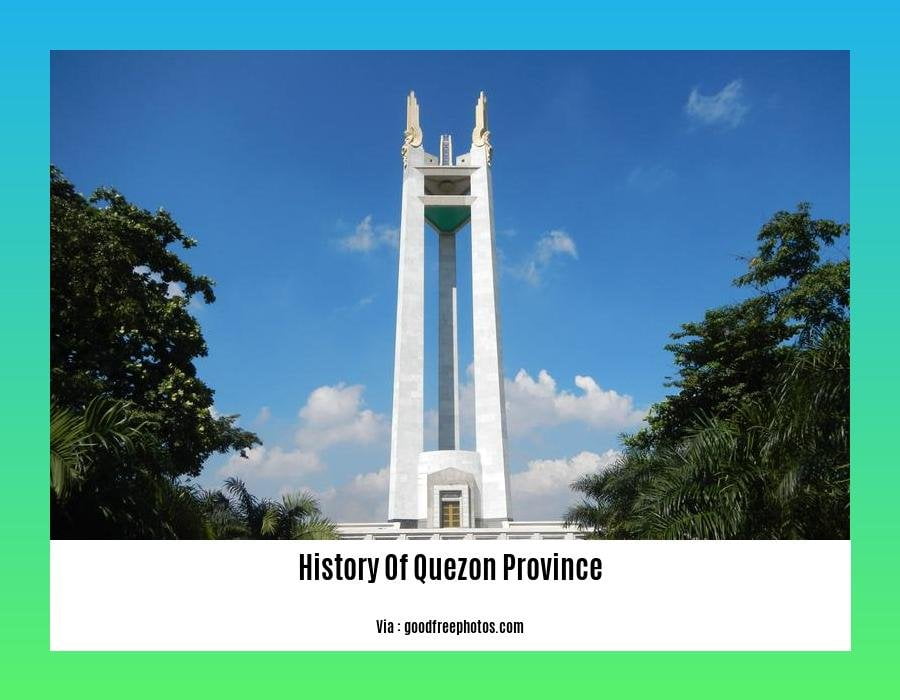
Quezon Province during the Philippine Revolution
In the annals of the Philippine Revolution, Quezon Province, then known as Tayabas, etched its name in letters of bravery and resilience. The province’s unsung heroes, imbued with a burning desire for freedom from Spanish colonial rule, played a pivotal role in the struggle for independence.
Local Heroes of Tayabas
Among the valiant heroes who emerged from Tayabas’ soil was General Miguel Malvar. He fearlessly led the Tayabas Revolutionary Army, earning renown as one of the most formidable Filipino generals during the revolution. His cunning military strategies and unwavering commitment to the cause of independence made him a formidable adversary to the Spanish forces.
The Martyrdom of Apolinario Mabini
Another luminary figure from Tayabas was Apolinario Mabini, the “Brains of the Revolution.” Despite his physical limitations, Mabini served as Emilio Aguinaldo’s trusted adviser and penned the Malolos Constitution, the blueprint for the First Philippine Republic. His unwavering dedication to the revolutionary government, even in the face of adversity, earned him the profound respect of his contemporaries.
The American Colonial Period: Transitions and Transformations
The Philippine-American War, a bitter conflict that followed the Philippine Revolution, brought about significant changes in Tayabas. The province transitioned from Spanish rule to American colonial control, ushering in a new era marked by both challenges and opportunities.
Economic Growth and Agricultural Development
Under American rule, Tayabas experienced a period of economic growth. Cash crops such as coconut and abaca flourished, transforming the province into a thriving agricultural hub. The establishment of schools and the introduction of modern farming techniques contributed to the province’s economic development.
Resistance and Struggle for Independence
Despite the economic progress, the desire for independence continued to burn in the hearts of many Tayabenses. The province became a hotbed of resistance against American rule. Notable figures like General Lucban and General Malvar led guerrilla campaigns, refusing to bow to foreign domination.
Cultural and Social Transformation
The American colonial period also brought about significant cultural and social changes. The introduction of the English language, the establishment of public schools, and the rise of Protestantism left an enduring impact on Tayabas society.
Key Takeaways:
- Tayabas’ heroic sons, like General Miguel Malvar and Apolinario Mabini, played crucial roles in the Philippine Revolution.
- The province transitioned from Spanish to American rule, experiencing both economic growth and resistance against foreign domination.
- Agriculture flourished, with cash crops like coconut and abaca transforming Tayabas into a thriving agricultural hub.
- American influence brought cultural and social changes, including the introduction of English, public schools, and Protestantism.
References:
- Tayabas Province
- History of Quezon
World War II and the Japanese occupation of Quezon Province
The serenity of Quezon Province was shattered with the arrival of World War II and the brutal occupation by the Japanese Imperial forces. Let’s journey back to a time when darkness fell upon this region and explore the lingering effects it left behind.
Quezon Under Siege: The Japanese Occupation
In 1942, the thunderous march of the Japanese military reached Quezon, marking a period of turmoil and resistance. The province became a strategic battleground, with towns and villages turning into battlefields. The Japanese occupation brought with it a reign of terror, as the local population endured hardships, atrocities, and the constant threat of violence.
Heroes Emerge: Filipino Resistance
Despite the overwhelming odds, the indomitable spirit of the Filipino people shone through. Quezon became a hub for Filipino resistance movements, with brave men and women rising against the occupiers. Guerrilla groups conducted daring raids, sabotaging Japanese supply lines and providing vital intelligence to the Allied forces.
The Liberation: A New Dawn
The tide of the war eventually turned, and in 1945, the combined forces of the Filipino and American troops liberated Quezon from Japanese control. The scars of war were deep, but the province slowly began to rebuild, its people determined to move forward from the darkness of the past.
Key Takeaways:
- The Japanese occupation of Quezon Province during World War II was a period of immense suffering and hardship for the local population.
- Despite the brutality of the occupation, Filipino resistance groups emerged, playing a crucial role in the fight for liberation.
- The liberation of Quezon in 1945 marked a new beginning for the province, as it embarked on the path of recovery and reconstruction.
Sources:
[1] Quezon Province: History and Culture [www.quezonprovince.gov.ph/history-and-culture]
[2] The Japanese Occupation of the Philippines [www.philippine-history.org/japanese-occupation.htm]
Post-independence Quezon Province: Economic development and cultural change
Quezon Province, named after President Manuel L. Quezon, emerged from the shadows of colonialism with a burning desire to redefine its identity. Post-independence, the province embarked on a remarkable journey of economic development and cultural transformation, leaving an indelible mark on the tapestry of Philippine history.
Economic Development
The post-independence era witnessed Quezon Province embrace new opportunities and forge a path towards economic prosperity. Agriculture remained the backbone of the economy, with coconut plantations flourishing and providing a steady source of income for many residents. The province also tapped into its rich natural resources, developing industries such as mining, quarrying, and forestry.
Moreover, Quezon Province recognized the importance of infrastructure development to fuel economic growth. Roads, bridges, and ports were constructed, connecting the province to major trade routes and facilitating the flow of goods and services. This infrastructure boom not only enhanced connectivity but also attracted investments and spurred industrialization.
Cultural Change
As Quezon Province evolved economically, its cultural landscape also underwent a period of transformation. The province remained deeply rooted in its traditional customs and beliefs, yet it also embraced new ideas and influences from various parts of the Philippines and beyond.
Education played a crucial role in shaping the cultural identity of Quezon Province. Schools and universities were established, providing opportunities for the youth to acquire knowledge and skills. This led to a rise in literacy rates and the development of a more educated and progressive population.
The blending of traditional and modern influences gave rise to a unique cultural tapestry in Quezon Province. New forms of art, music, and literature emerged, reflecting the province’s rich history and its embrace of contemporary trends. Festivals and celebrations became a vibrant expression of the province’s diverse cultural heritage.
Key Takeaways:
Post-independence Quezon Province embarked on a journey of economic development, transforming itself from an agricultural region to a hub of industry and commerce.
The province embraced new technologies and infrastructure, leading to improved connectivity and increased investment.
- Education played a pivotal role in shaping the cultural identity of Quezon Province, fostering literacy and progressiveness.
- The blending of traditional and modern influences resulted in a unique cultural tapestry, reflected in art, music, literature, and festivals.
Sources:
[1] Quezon City Government: https://quezoncity.gov.ph/wp-content/uploads/2021/04/Chapter-1-The-Envisioned-City-of-Quezon.pdf
[2] Philippine-Real-estate.com:
FAQ
Q1: What historical significance does Quezon Province hold?
A1: Quezon Province boasts a rich history, marked by the Tayabas Uprising, the American invasion era, the Japanese occupation era, and the journey to Philippine independence. Additionally, the rise of the coconut industry has significantly shaped the province’s development and identity.
Q2: What was the rationale behind renaming Tayabas as Quezon Province?
A2: In 1946, Tayabas Province underwent a name change to honor Manuel Luis Quezon, the first president of the Commonwealth Period and the second president of the independent Philippines, acknowledging his significant contributions to the nation’s history.
Q3: What archaeological discoveries have shed light on Quezon’s precolonial past?
A3: Archaeological excavations in Quezon Province have unearthed various artifacts, including burial jars, human bones, shell middens, and pot shreds, providing valuable insights into the province’s rich precolonial history and the existence of early settlements in the region.
Q4: How did Quezon Province come to be part of the Calabarzon region?
A4: Located in the Calabarzon region on Luzon, Quezon Province is situated alongside other provinces such as Cavite, Laguna, Batangas, Rizal, and Quezon City, forming a significant administrative and economic region in the Philippines.
Q5: What factors contributed to the rise of the coconut industry in Quezon Province?
A5: The coconut industry’s growth in Quezon Province can be attributed to several factors, including the province’s favorable climate and soil conditions, the presence of extensive coconut plantations, and the ingenuity of local farmers who have embraced modern cultivation techniques and processing methods.
- Unlock Water’s Symbolism: A Cross-Cultural Exploration - April 20, 2025
- Identify Black and White Snakes: Venomous or Harmless? - April 20, 2025
- Unlocking Potential: Origins High School’s NYC Story - April 20, 2025
